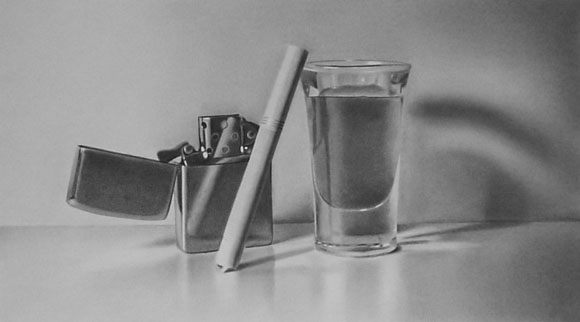SOPHOMORES:
Here are some artists, architects, and sources that may help inspire your projects!
http://www.rndrd.com/
Timothy Geier
MC Escher
Douglas Darden
Vasco Mourao
Daniel Libeskind
Frank Lloyd Wright
Renaissance Architectural Drawings
Contemporist.com - Architecture
10 Great Contemporary Architects
Wiki - Modern Architecture
Ted Talks on Architecture
50 Examples of Amazing Archetecture
Anyone else you know of? Let me know!
Wednesday, December 18, 2013
Friday, November 15, 2013
Assignment #7
Sophomores:
DUE: Wednesday, 11/20
Set up a still life of an egg on a white piece of paper. Use a lamp to create a strong light source. Use ebony pencil to draw your still life. Remember to include all 5 elements of chiaroscuro: highlight, shade (halftone), shadow, reflected light, and cast shadow.

Juniors:
DUE: Thursday 11/21
Choose two "issues" you feel you could be an activist for/against. This can be related to current events, or it can be an ongoing problem that you see in the world. How could you help bring awareness to the issue? How do you think the problem could be solved? Either (1) write down the two "issues" you've chosen, and some notes on how to bring awareness to each, or how you could start to solve the problems. Or (2) bring in an article/essay/literature/video about each issue and highlight/take notes on the significant parts of the article/essay/literature/video that you want to focus on.
We will be creating an image to bring attention to the issue we feel strongly about.
Seniors:
DUE: Monday, 11/25
Have at least ONE piece finished and ready to critique. We will be hanging work in the hallway that week. While finishing up your projects, consider the following:
-What is your concept (idea, theme, what you are trying to tell the viewer)?
-Which Elements of Art did you focus on? How do those elements help define your concept?
-What other artists have created art that has a similar concept? What are similarities and differences between your art and that artist's work?
-Is there an artistic movement that your work could fit into?
When your piece is finished, you will be filling pages in your sketchbooks comparing your art to the art of a recognized fine artist
DUE: Wednesday, 11/20
Set up a still life of an egg on a white piece of paper. Use a lamp to create a strong light source. Use ebony pencil to draw your still life. Remember to include all 5 elements of chiaroscuro: highlight, shade (halftone), shadow, reflected light, and cast shadow.
Juniors:
DUE: Thursday 11/21
Choose two "issues" you feel you could be an activist for/against. This can be related to current events, or it can be an ongoing problem that you see in the world. How could you help bring awareness to the issue? How do you think the problem could be solved? Either (1) write down the two "issues" you've chosen, and some notes on how to bring awareness to each, or how you could start to solve the problems. Or (2) bring in an article/essay/literature/video about each issue and highlight/take notes on the significant parts of the article/essay/literature/video that you want to focus on.
We will be creating an image to bring attention to the issue we feel strongly about.
Seniors:
DUE: Monday, 11/25
Have at least ONE piece finished and ready to critique. We will be hanging work in the hallway that week. While finishing up your projects, consider the following:
-What is your concept (idea, theme, what you are trying to tell the viewer)?
-Which Elements of Art did you focus on? How do those elements help define your concept?
-What other artists have created art that has a similar concept? What are similarities and differences between your art and that artist's work?
-Is there an artistic movement that your work could fit into?
When your piece is finished, you will be filling pages in your sketchbooks comparing your art to the art of a recognized fine artist
Labels:
Assignments
Wednesday, October 23, 2013
Assignment #6
ALL STUDENTS (Sophomores, Juniors, AND Seniors):
Email (or deliver by hand to me) the NAME and ARTIST of ONE song that you know ALL of the words to.
Do NOT tell anyone what you have decided on!!! Once a song name & artist has been received from every student, there will be a matching quiz to match the student names to the songs they know. Extra credit points will go to the top-scoring student!
Sophomores:
DUE: Wednesday 10/30
Make a drawing in your sketchbook that shows:
-Atmospheric Perspective (objects getting lighter, bluer and fuzzier as they get further away)
-one example of Linear Perspective (one point, two point or three point perspective)
-use whatever medium you want! (pencil, watercolor, charcoal, ink, etc.)
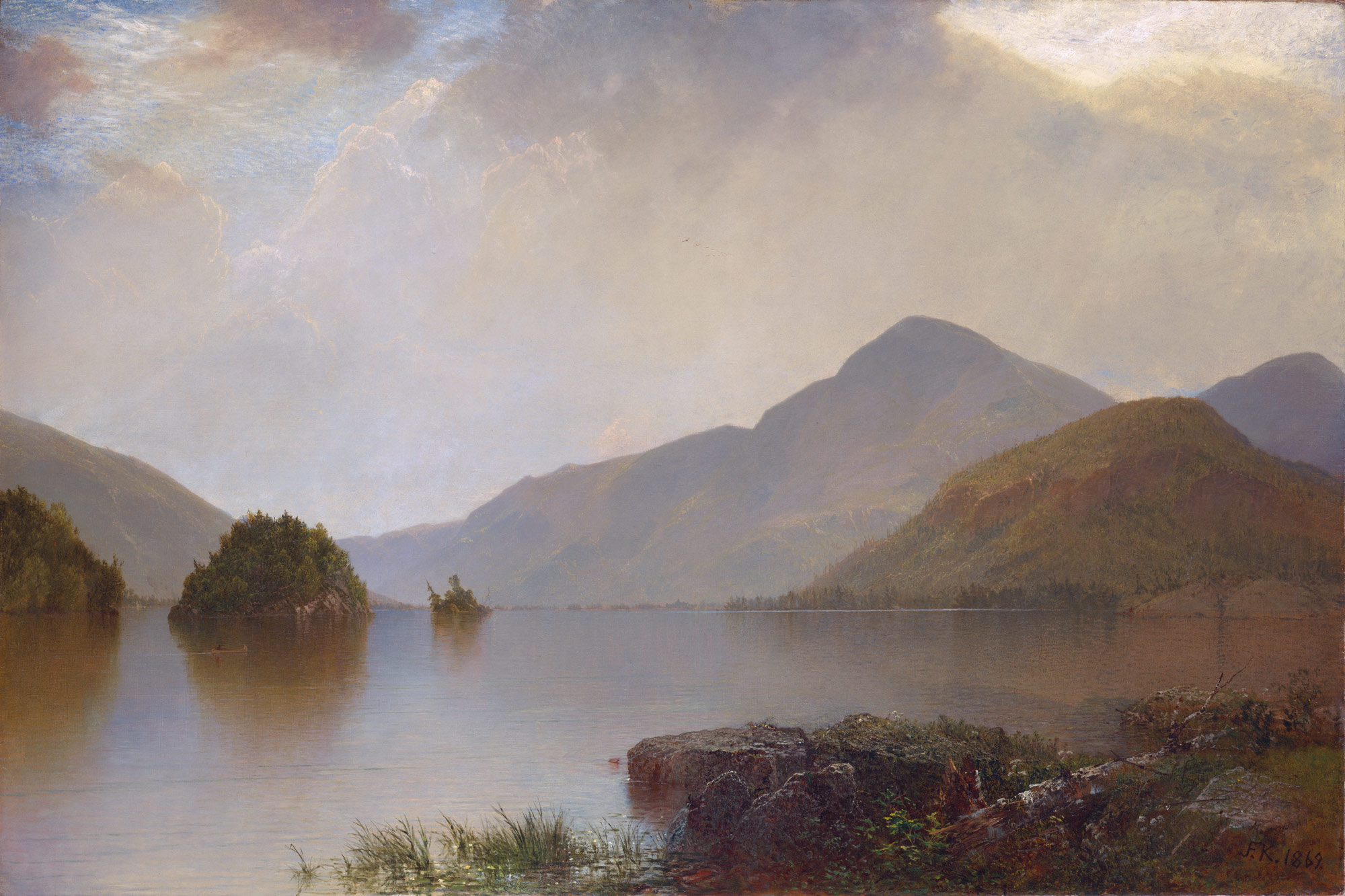
John Frederick Kensett "Lake George" 1869

Jean-Baptiste-Camille Corot "The Bridge at Narni" 1826.
Juniors:
DUE: Tuesday 10/29
Continue to work on creating small thumbnails of patterns that range in value. (See last weeks assignment, Assignment #5)
Seniors:
Due: Your next class.
Continue to bring in all materials for working in class. If you need to project something on the Smart Board or if you need to print something out, make sure you have emailed it to yourself.
Email (or deliver by hand to me) the NAME and ARTIST of ONE song that you know ALL of the words to.
Do NOT tell anyone what you have decided on!!! Once a song name & artist has been received from every student, there will be a matching quiz to match the student names to the songs they know. Extra credit points will go to the top-scoring student!
Sophomores:
DUE: Wednesday 10/30
Make a drawing in your sketchbook that shows:
-Atmospheric Perspective (objects getting lighter, bluer and fuzzier as they get further away)
-one example of Linear Perspective (one point, two point or three point perspective)
-use whatever medium you want! (pencil, watercolor, charcoal, ink, etc.)

John Frederick Kensett "Lake George" 1869

Jean-Baptiste-Camille Corot "The Bridge at Narni" 1826.
Juniors:
DUE: Tuesday 10/29
Continue to work on creating small thumbnails of patterns that range in value. (See last weeks assignment, Assignment #5)
Seniors:
Due: Your next class.
Continue to bring in all materials for working in class. If you need to project something on the Smart Board or if you need to print something out, make sure you have emailed it to yourself.
Labels:
Assignments
Wednesday, October 16, 2013
Assignment #5
ALL STUDENTS (Sophomores, Juniors, AND Seniors):
Email (or deliver by hand to me) the NAME and ARTIST of ONE song that you know ALL of the words to.
Do NOT tell anyone what you have decided on!!! Once a song name & artist has been received from every student, there will be a matching quiz to match the student names to the songs they know. Extra credit points will go to the top-scoring student!
Sophomores:
DUE: Monday 10-21
Make a drawing of a road using one point perspective. Include the following elements in your drawing:
-vanishing point
-horizon line
-a repeating object that recedes into the distance (ie: trees, telephone poles, bushes, buildings)
-chiaroscuro (shading from light to dark, including drop shadow)
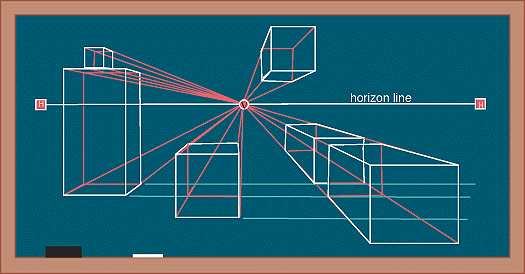

Baldassare Peruzzi, One-point perspective of a Roman street (1515)

Tom Bauer, photograph
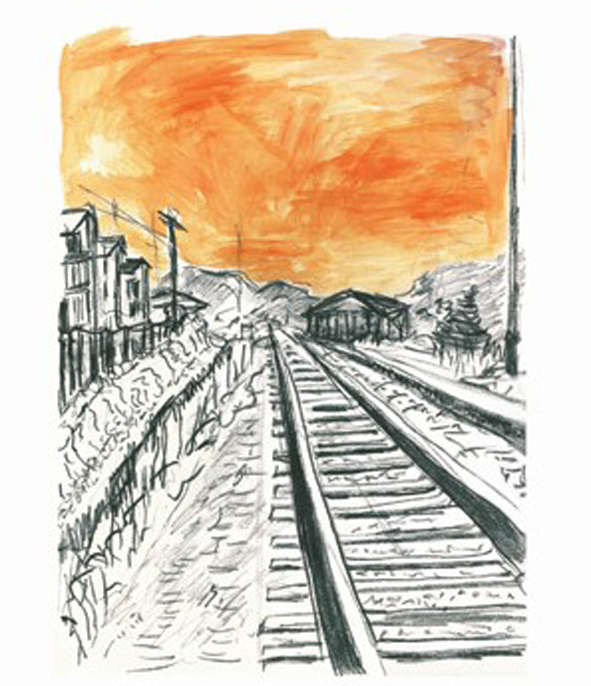
Chris Gregory, pencil, watercolor
Juniors:
DUE: Thursday 10/24
Make 15 squares on a page in your sketchbook. Make each square 1 inch by 1 inch. Fill in each individual square with a different pattern or series of marks. Use a Black pen. The objective is to use texture and pattern in different ways that produce different values. When you are done, hold the paper away from you to see the difference in value.
+++++
+++
+
Seniors:
For Class 10/21 or 10/22
Bring in all materials to work on your individual projects.
Email (or deliver by hand to me) the NAME and ARTIST of ONE song that you know ALL of the words to.
Do NOT tell anyone what you have decided on!!! Once a song name & artist has been received from every student, there will be a matching quiz to match the student names to the songs they know. Extra credit points will go to the top-scoring student!
Sophomores:
DUE: Monday 10-21
Make a drawing of a road using one point perspective. Include the following elements in your drawing:
-vanishing point
-horizon line
-a repeating object that recedes into the distance (ie: trees, telephone poles, bushes, buildings)
-chiaroscuro (shading from light to dark, including drop shadow)


Baldassare Peruzzi, One-point perspective of a Roman street (1515)
Tom Bauer, photograph

Chris Gregory, pencil, watercolor
+++++
+++
+
Juniors:
DUE: Thursday 10/24
Make 15 squares on a page in your sketchbook. Make each square 1 inch by 1 inch. Fill in each individual square with a different pattern or series of marks. Use a Black pen. The objective is to use texture and pattern in different ways that produce different values. When you are done, hold the paper away from you to see the difference in value.
(my sketchbook from HS)
+++++
+++
+
Seniors:
For Class 10/21 or 10/22
Bring in all materials to work on your individual projects.
Labels:
Assignments
Wednesday, October 2, 2013
Assignment #4
Sophomores
DUE: Monday 10-7
Make a drawing of a road using one point perspective. Include the following elements in your drawing:
-vanishing point
-horizon line
-a repeating object that recedes into the distance (ie: trees, telephone poles, bushes, buildings)
-chiaroscuro (shading from light to dark, including drop shadow)


Baldassare Peruzzi, One-point perspective of a Roman street (1515)

Tom Bauer, photograph

Chris Gregory, pencil, watercolor
 Chuck Close
Chuck Close

Seniors
DUE: (Kappa) Monday 10/14
DUE: (Omega) Tuesday 10/15
Make art in the style of the artist who you wrote your journal entry on. You can recreate a work by them, or create a totally original piece. If you create something totally original, you must be able to relate your project to your artist.
When relating to your artist, think about:
Their style/technique: what materials do they use? How do they use them?
Their concept/meaning: what are they trying to say? what conclusions do you come to about the meaning of their work? what was their intention in creating their work?
Their subject matter: What are they depicting (figures, objects, landscapes, abstraction)?
What stands out to you? What element of their work do you respond to most?
How were they representative of the time period they made work in? How would you represent your own time and culture?
DUE: Monday 10-7
Make a drawing of a road using one point perspective. Include the following elements in your drawing:
-vanishing point
-horizon line
-a repeating object that recedes into the distance (ie: trees, telephone poles, bushes, buildings)
-chiaroscuro (shading from light to dark, including drop shadow)


Baldassare Peruzzi, One-point perspective of a Roman street (1515)
Tom Bauer, photograph

Chris Gregory, pencil, watercolor
=====
===
=
===
=====
Juniors:
DUE : Tuesday, 10/10
Find a black and white photograph. Print it out on 8.5x11" paper. Use a ruler to draw a 1/4 inch grid over the picture. OR impose a 1/4 inch grid over the picture digitally before you print it. On a gridded piece of paper, recreate the image by filling in each square with the corresponding value. You can label the grids with letters or numbers on the y and x axis to make each square easier to locate. The end aesthetic should look like a highly pixelated version of the photograph.
 Chuck Close
Chuck Close
1973 cover of “Scientific American” on the left and Leon Harmon’s “Abraham Lincoln” (1973) on the right.
=====
===
=
===
=====
Seniors
DUE: (Kappa) Monday 10/14
DUE: (Omega) Tuesday 10/15
Make art in the style of the artist who you wrote your journal entry on. You can recreate a work by them, or create a totally original piece. If you create something totally original, you must be able to relate your project to your artist.
When relating to your artist, think about:
Their style/technique: what materials do they use? How do they use them?
Their concept/meaning: what are they trying to say? what conclusions do you come to about the meaning of their work? what was their intention in creating their work?
Their subject matter: What are they depicting (figures, objects, landscapes, abstraction)?
What stands out to you? What element of their work do you respond to most?
How were they representative of the time period they made work in? How would you represent your own time and culture?
Labels:
Assignments
Wednesday, September 25, 2013
Assignment #3
Sophomores:
 Rembrandt van Rijn "Self Portrait" 1629
Rembrandt van Rijn "Self Portrait" 1629
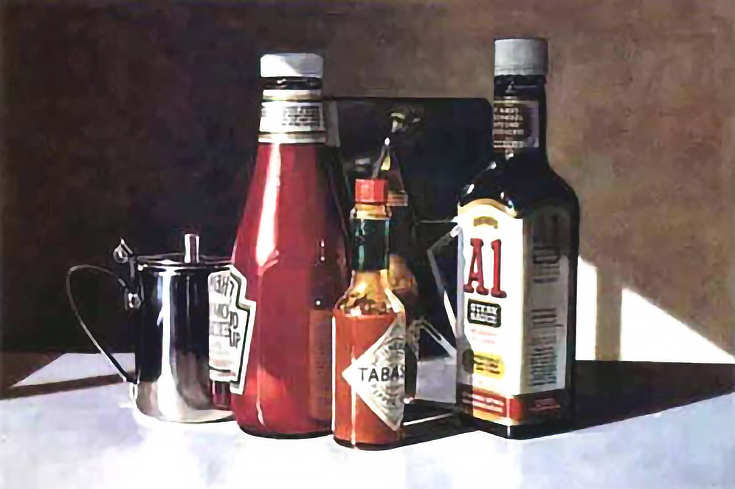 Ralph Goings "A1 Sauce"
Ralph Goings "A1 Sauce"
 Chuck Close
Chuck Close

DUE: Monday, 9/30
Make an observational drawing using ebony pencil. You can make a still life of your choice (bowl of fruit, stack of books, shoes, chair with a jacket on it, etc), draw a corner of a room, or draw yourself using a mirror.
-Use one strong light source.
-Make sure to include a full range of value. Include all the parts of chiaroscuro: (highlight, halftone, deep-shadow, reflected light, cast shadow).
-Make sure there is a foreground and background.
-Draw what you see! Do not include outlines! They do not exist!
Examples:
 Rembrandt van Rijn "Self Portrait" 1629
Rembrandt van Rijn "Self Portrait" 1629 Ralph Goings "A1 Sauce"
Ralph Goings "A1 Sauce"
Juniors:
DUE : Tuesday, 10/1
Find a black and white photograph. Print it out on 8.5x11" paper. Use a ruler to draw a 1/4 inch grid over the picture. OR impose a 1/4 inch grid over the picture digitally before you print it. On a gridded piece of paper, recreate the image by filling in each square with the corresponding value. You can label the grids with letters or numbers on the y and x axis to make each square easier to locate. The end aesthetic should look like a highly pixelated version of the photograph.
 Chuck Close
Chuck Close
1973 cover of “Scientific American” on the left and Leon Harmon’s “Abraham Lincoln” (1973) on the right.
Seniors:
Kappa: DUE Monday 10/7
Omega: DUE: Tuesday 10/8
Create an image in the style of the artist (or one of the artists) you chose to write your journal entry about. Be prepared to present your image to the class. When creating your image, think about: what materials you chose and why, what your image is depicting and why, how you are relating to the time period the artist is from or the culture they are from (or your own time period and culture), etc.
(If you do not want to create an image in the style of your artist you may pick another one, but it must be approved by me (Miss D.))
Labels:
Assignments
Monday, September 16, 2013
Assignment #2
Sophomores:
 Rembrandt van Rijn "Self Portrait" 1629
Rembrandt van Rijn "Self Portrait" 1629

 George Seurat: charcoal studies
George Seurat: charcoal studies
 Sol Lewitt
Sol Lewitt
 Chuck Close. One layer of multi-layer self portrait.
Chuck Close. One layer of multi-layer self portrait.
DUE: Monday, 9/23
Make an observational drawing using ebony pencil. You can make a still life of your choice (bowl of fruit, stack of books, shoes, chair with a jacket on it, etc), draw a corner of a room, or draw yourself using a mirror. Use one strong light source. Make sure to include a full range of value. Include all the parts of chiaroscuro: (highlight, halftone, deep-shadow, reflected light, cast shadow). Make sure there is a foreground and background. Draw what you see! Do not include outlines! They do not exist!
Examples:
 Rembrandt van Rijn "Self Portrait" 1629
Rembrandt van Rijn "Self Portrait" 1629
Juniors
DUE - Tuesday 9/24
Make a drawing using only line density to create a full range of value. Do not use outlines. You may use a photograph to draw from.
Examples:

 George Seurat: charcoal studies
George Seurat: charcoal studies Sol Lewitt
Sol Lewitt Chuck Close. One layer of multi-layer self portrait.
Chuck Close. One layer of multi-layer self portrait.
Seniors
DUE - Monday 9/23 (Kappa) or Tuesday 9/24 (Omega)
For Class: Bring in Shoeboxes and other cardboard, or similar containers. You will be constructing still-lifes.
Journal Entries:
Research an artist whose work you find interesting. Fill 3 pages (just front) or 1.5 pages (front & back) in your sketchbook of images and text. Fill no more than 50% of the space with images. Have at least 3 different images of work by the artist. Fill the rest of the space with your response to the work.
Questions you can ask yourself can include:
What is my emotional response to the work?
What are some themes I can see throughout the artist's work?
What are the formal qualities of the work (Principles of Art/Elements of Design)
How was the work a reflection of the time period its from?
How does the art reflect the culture of the artist?
How was it made? What was it made with (medium)?
What could be the intention of the artist?
What do I notice first about it?
What does it remind me of? What do I associate with it? What does it reference?
What adjectives would I use to describe it?
(If part of a series) How does it relate to the others? How does it differ?
(If part of a series) What do the pieces do together that they do not do separately?
Labels:
Assignments
Thursday, September 12, 2013
Assignment #1
Sophomores:
DUE: Monday, 9/16
Make an observational drawing using ebony pencil. You can make a still life of your choice, or draw a corner of a room, or draw yourself using a mirror. Use one strong light source. Make sure to include a full range of value. Include all the parts of chiaroscuro: (highlight, halftone, deep-shadow, reflected light, cast shadow). Make sure there is a foreground and background.
Examples:
Juniors:
DUE : Tuesday 9/17
In your sketchbook, make 2 drawings of words. Pick one word per drawing. Think about the shape of the word, the placement of the word on the page, the size of the word, the word's meaning, etc. Objective: to improve drawing skills, increase comfort with drawing, to be able to make an image that is representational of a concise idea.
Exampes:
Seniors
DUE - Monday 9/23 (Kappa) or Tuesday 9/24 (Omega)
Research an artist whose work you find interesting. Fill 3 pages (just front) or 1.5 pages (front & back) in your sketchbook of images and text. Fill no more than 50% of the space with images. Have at least 3 different images of work by the artist. Fill the rest of the space with your response to the work.
Questions you can ask yourself can include:
What is my emotional response to the work?
What are some themes I can see throughout the artist's work?
What are the formal qualities of the work (Principles of Art/Elements of Design)
How was the work a reflection of the time period its from?
How does the art reflect the culture of the artist?
How was it made? What was it made with (medium)?
What could be the intention of the artist?
What do I notice first about it?
What does it remind me of? What do I associate with it? What does it reference?
What adjectives would I use to describe it?
(If part of a series) How does it relate to the others? How does it differ?
(If part of a series) What do the pieces do together that they do not do separately?
Labels:
Assignments
Subscribe to:
Comments (Atom)

.JPG)

